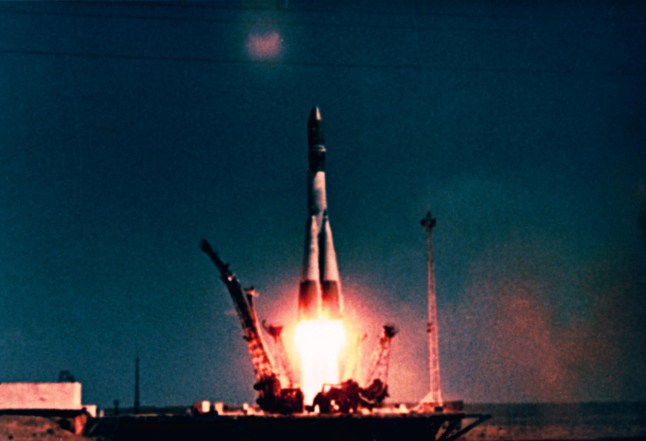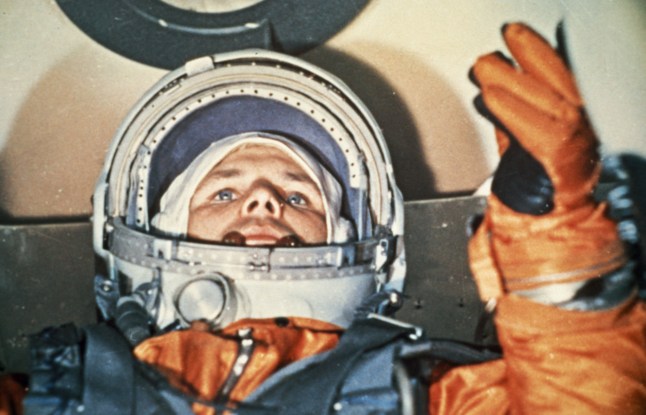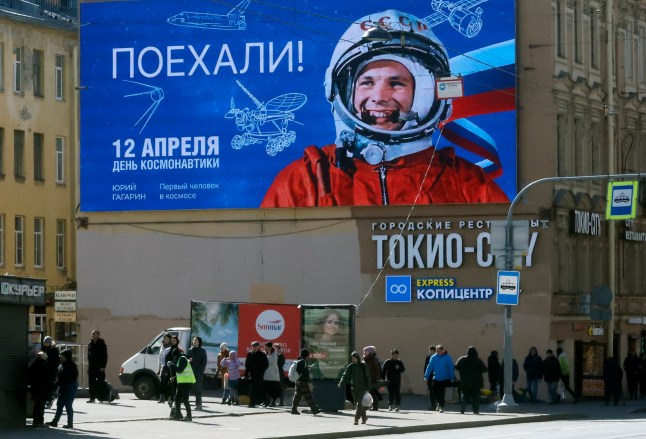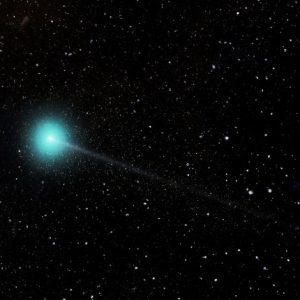
64 years ago, a man born in a tiny Russian village to a carpenter and a dairy farmer spent 108 minutes looking down at Earth.
Cosmonaut Yuri Gagarin, then 27, became the first human to enter space on April 12, 1961, in a mission seen as one of Russia’s – and humanity’s – greatest achievements.
At the time, the US and the Soviet Union were engaged in a years-long space race as no country had managed to fly a human there.
The competition between the two Cold War rivals began in earnest in 1955 after the USSR responded to the Americans’ plans to launch artificial satellites, according to Royal Museums Greenwich.
Today’s advancements in medical and home tech came from that rivalry as the countries pushed each other on for new breakthroughs.

US President Dwight D. Eisenhower created the National Aeronautics and Space Administration (NASA) in 1958 in response to Soviet space advancement.
The Soviet Union was eager to have its cosmonaut in space first.
Their choice for the extraterrestrial job was a young, 5’2” tall Russian military pilot and industrial technician.
He would become a star after the launch of the Vostok space capsule on April 12, 1961.
Gagarin’s physique was perfect for the risky mission – the cosmonaut flying the Vostok could not weigh more than 159lb and be no taller than 5’7”.
The launch itself was at a knife’s edge when the first test flight of Vostok-K rocket failed.


Its capsule never reached orbit and landed back on Earth with two dogs on board, who survived, but if it had not, it may have delayed Gagarin’s later flight.
The US responded by launching a chimpanzee named Ham into space, who was the first great ape in space (it survived the landing).
Gagarin’s capsule is basic by modern standards. Tiny, too – measuring just 7.5′ by 7.8′, roughly the size of a car.
He orbited the Earth once during a 108-minute flight before being ejected from Vostok through a hatch.
Luckily, Gagarin’s parachute opened and he landed around 590 miles southeast of Moscow in Engels, Saratov region.
Without Vostok, the rocket technology used now to transport astronauts to the International Space Station (ISS) might not exist.

What technology came from space exploration?
But the Soviet’s space victory was short-lived – American astronaut Alan Shepard entered space on the Freedom 7 spacecraft.
Both countries continued to send more humans into space in the years that followed, sometimes with fatal consequences but also victories like the first woman in space and first landing on the Moon.
The space race is thought to have ended when Neil Armstrong stepped on the Moon on July 20, 1969 from Apollo spacecraft.
But the fierce development of space technology continued.

It was the Soviets who managed to launch the first space station on April 19, 1971.
Parts of this spacecraft became core segments of the ISS when it was established at the start of the new millennium, the museum says.
The ISS, home to astronauts, cosmonauts and a science laboratory, orbits the Earth at a staggering speed of 17,500 mph.
Thanks to the space station, scientists can study and prepare ‘human missions that reach farther into space than ever before’, NASA said.

Communication
The satellites that support our daily tech habits came from space exploration.
Satellite technology forms the basis of broadband and HD television, data for weather reports and GPS navigation and broadcasting.
Modern day armies also rely on satellite reconnaissance, early warning and weapon delivery.
First artificial satellite, Sputnik 1, was launched in October 1957 by the Soviets, soon followed by the Americans.
Space technology brings to mind futuristic machines and microchips – and maybe scenes from Stanley Kubrick’s classic film 2001, A Space Odyssey.
But Japan’s space agency JAXA and NASA are reimagining space technology with a wooden satellite prototype called LingoSat.

It will be launched this summer to explore how biological materials could be used in space after concern over atmospheric aerosols from traditional satellites harming Earth’s ozone layer, according to CNN.
Koji Murata, a researcher at Kyoto University in Japan, told the outlet: ‘At the end of their life, satellites re-enter the atmosphere.
‘The difference is, the wood in the LingoSat will burn up and eventually become a gas, whereas metals become fine particles instead.’
Medical
Healthcare relies on technology that originates from space missions, including artificial heart pumps, image processing in CAT scans and radiography.
Radiography was initially developed for deep space imaging and photography of the moon.
Scientists in NASA’s Jet Propulsion Laboratory then utilised the technology to create the MRI scan used in life-saving medicine across the world.

NASA can not gate-keep its innovations as it is required by law to share its findings with the US government so that the tech can be used more widely.
The launch of a spacecraft is a risky operation as the shuttle and the launch pad are subjected to extreme conditions.
So NASA’s lab created better shock absorbers that are now used in hundreds of buildings and bridges in earthquake-prone regions across the world.
None of these structures ‘have suffered even minor damage during an earthquake,’ NASA says.
Shock-absorbent innovations helped to improve dynamic artificial limbs.
Technology
It is easy to take technology for granted, but most of our daily activities are powered by machines and ever-evolving applications.
The Cold War space race from 1955 to 1977 was an exciting and nerve-wrecking time to be a scientist in the field.
The US and Soviet Union competed who had the most space engineers.
Sputnik’s launch was feared to mark a ‘technological Pearl Harbour’, Computer History Museum wrote.

The world’s first portable computer emerged from space exploration – although it looked very different from the sleek and thin laptops we have today.
Digital computers – first costing millions of dollars – became available to more scientists at the time of Sputnik by the mid-1950s.
The first commercial computer was UNIVAC I used by the US Census Bureau in 1951.
Apollo’s programme that led to the Moon landing was supervised by computers through its planning, launch, navigation, the touchdown on Moon and return to Earth, Computer History Museum said.
What’s next for space exploration?
Whether you hate it or love it, AI technology is here to stay.
Any cutting-edge technology most likely has its origins in space exploration or is applied to it, including AI.
AI allows a computer or a robot to mimic human intelligence, particularly handy with huge amounts of data.
To view this video please enable JavaScript, and consider upgrading to a web
browser that
supports HTML5
video
It is now used to control large satellite constellations and analyse and process data from satellites, European Space Agency explained.
Autonomous navigation – enabled by AI – is crucial for spacecrafts to navigate independently in unknown environments, the agency said.
Other hot topics in space exploration are robotic spacecraft and human spaceflight.
Now private companies have stepped up to lead the game after the conventional space race between the two superpowers toned down at the end of the 1970s.
Having human colonies and cities on Mars is no longer just a sci-fi dream.
Technology is getting closer to crewed orbital and landing missions to the Moon and Mars.
This article was first published on April 13, 2024.
Get in touch with our news team by emailing us at webnews@metro.co.uk.
For more stories like this, check our news page.








